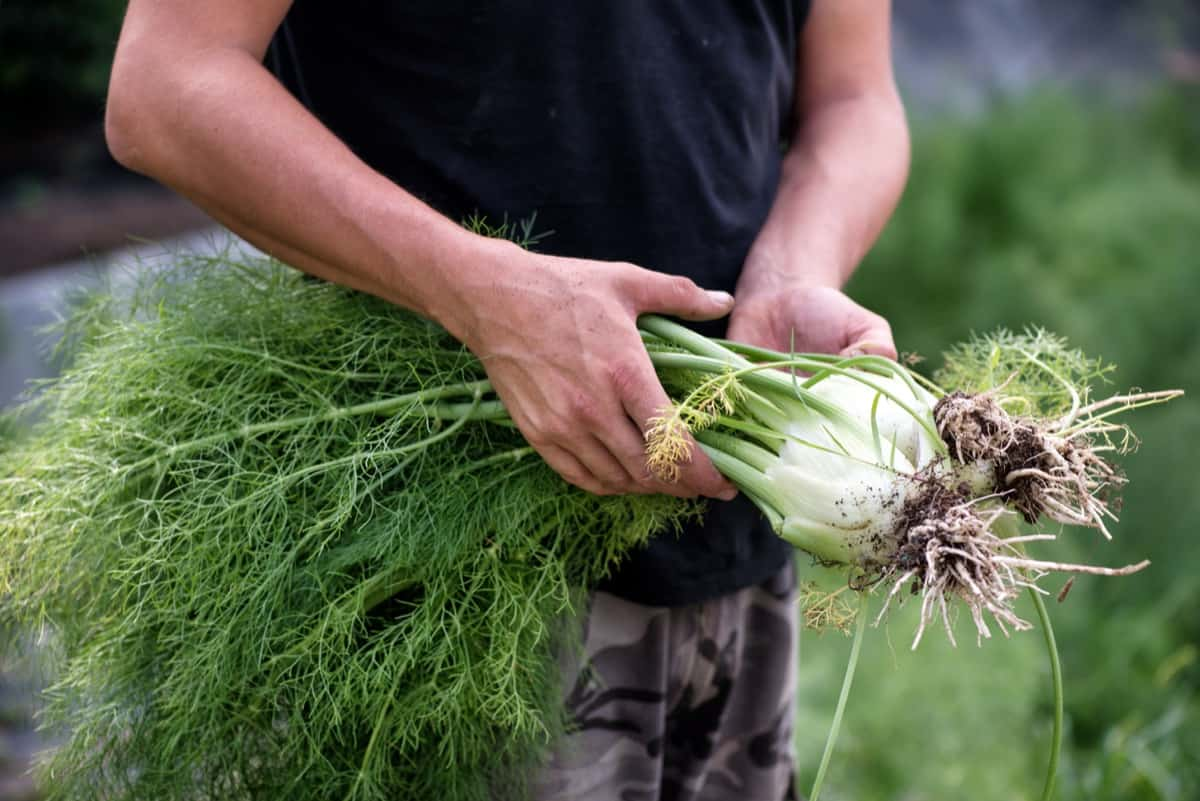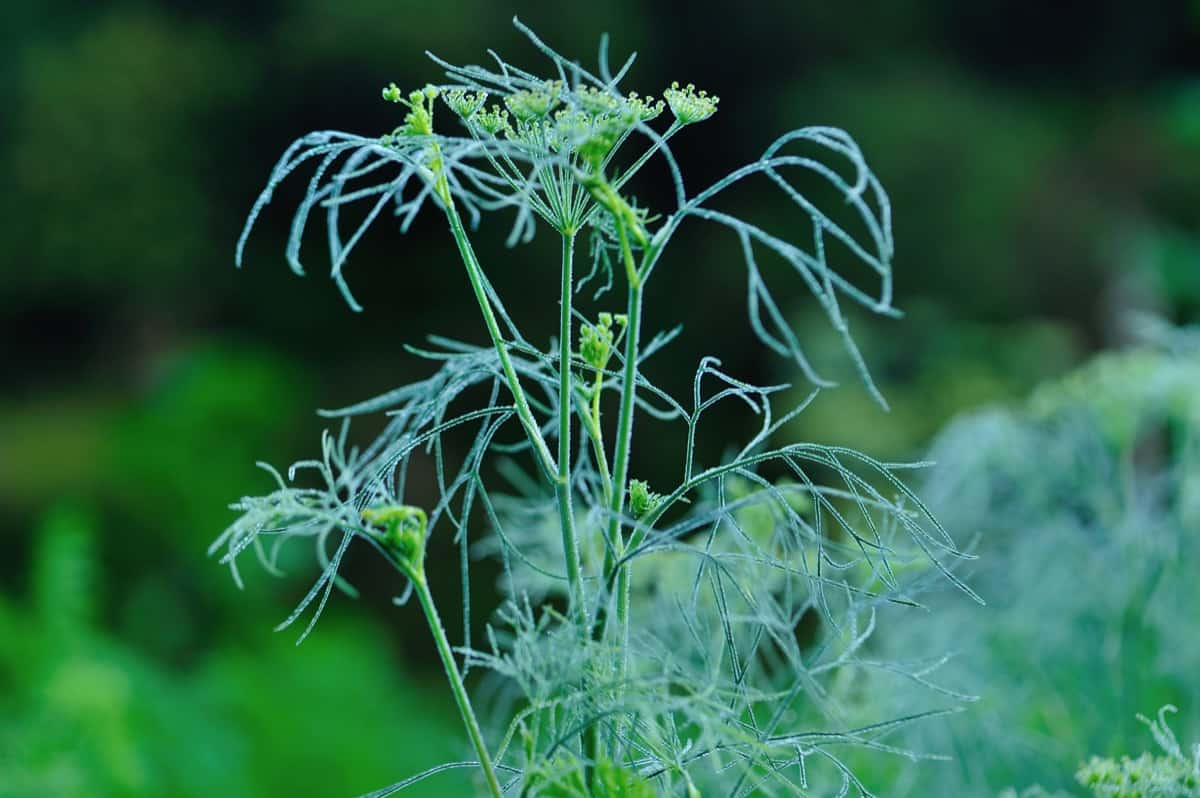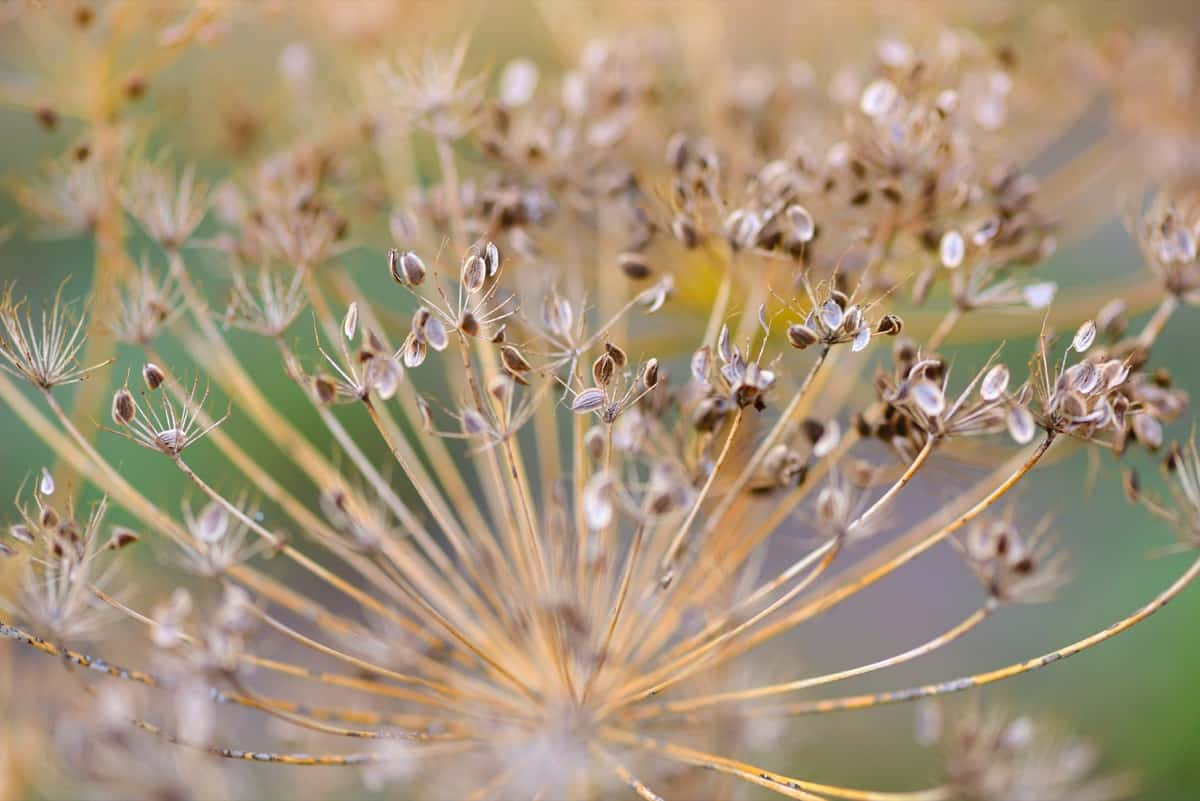Fennel plants, known for their aromatic leaves and edible bulbs, can be a delightful addition to any garden. However, like any other plant, fennel can face various problems hindering its growth and productivity. This article highlights common problems with fennel plants and provides effective treatments and solutions to help gardeners maintain healthy and thriving crops.

10 Common Problems with Fennel Plants
Yellowing Leaves on Growing Fennel Plants
- One possible cause of yellowing leaves on fennel plants is a nutrient deficiency. To address this issue, it is recommended to apply a balanced fertilizer specifically formulated for vegetable plants, following the manufacturer’s instructions.
- Overwatering can also cause yellowing leaves on fennel plants. Fennel plants prefer well-drained soil and should not be kept constantly wet. Ensuring proper drainage in the planting area can help prevent overwatering and yellowing leaves.
Pest Infestation in Fennel Plants
Aphids: Aphids are soft-bodied small insects that feed on plant sap. They are typically found on the undersides of leaves and cause damage by sucking the nutrients out of the plants. To control aphids on fennel plants, introduce natural predators like ladybugs and lacewings, which feed on aphids. In severe aphid infestation, you may need to resort to insecticidal soap.
Fennel Looper: Another pest that threatens fennel plants is the fennel looper. The larvae feed on the foliage, causing extensive damage. To control fennel loopers, introduce natural predators like parasitic wasps. Use insecticides specifically labeled for fennel looper control, ensuring minimal impact on beneficial insects and the environment.
Cutworms: To control cutworms, Introduce or attract beneficial insects like ground beetles, parasitic wasps, or predatory nematodes. Plant stems should be covered with plastic or foil collars at least 3 inches above the soil line and a few inches below.
In case you missed it: Frequently Asked Questions About Fennel Farming

Wilting Fennel Plants in the Garden
Wilting fennel plants in the garden can be a cause for concern. The leaves may appear droopy and discolored. This could indicate a lack of water or nutrient deficiency. To address these issues promptly to revive the plants. Proper watering and fertilization can help restore the health of the fennel plants. Providing adequate sunlight and ensuring proper drainage can also contribute to their recovery. Monitoring the moisture levels in the soil regularly is essential to prevent overwatering or underwatering. Observing the fennel plants closely and taking appropriate action can help revive them and ensure a healthy garden.
Stunted Growth in Growing Fennel
Stunted Growth in Fennel Seeds
It can be attributed to several factors. Firstly, poor seed quality or viability can hinder germination, leading to weak and underdeveloped seedlings. Buying high-quality seeds from reputable sources is essential to ensure healthy growth. Stunted growth in fennel seeds is also caused when improper planting depth. Fennel seeds should be sown approximately half an inch depth, providing optimal conditions for germination and subsequent growth.
Stunted Growth in Growing Fennel in Pots
Overcrowding fennel plants in pots can also result in stunted growth. When multiple plants are placed in a limited space, they compete for resources, including sunlight, water, and nutrients. This competition can hinder their growth and lead to stunted plants. Provide adequate spacing between fennel plants in pots for proper air circulation and resource allocation.
Fungal Diseases Affecting Fennel Plants
Damping-off: A seedling either rots and doesn’t germinate or germinates but collapses. The disease of fennel attacks the seedling’s base and leaves the base of the seedling with shriveled, dried-up stems. Using sterile potting media and fungicide-treated seed will help control this problem. Seedlings that become symptomatic should be discarded.
Powdery Mildew: Powdery mildew, also known as sugary disease, is caused by Sclerotinia sclerotiorum; the disease is spread by aphids. For vector control, spraying with Phosphomedon or Dimethoate commencing from the 50% emergence of flowers and also at the seed development stage is recommended.
Root And Crown Rot: Symptoms appear as wilting and a slow or rapid plant collapse. The roots appear brown and water-soaked instead of white. Control can be achieved using sterile potting media, clean pots, fungicide-treated seed, and a two-year rotation with nonsusceptible plants, such as corn. Affected plants should be pulled out and discarded.
Fennel Plants Not Forming Bulbs
- Insufficient Sunlight: If your fennel plants are not receiving adequate sunlight, consider relocating them to a sunnier spot in your garden or using reflective mulch to maximize sunlight absorption.
- Improper Soil Conditions: If the soil is too compact or heavy, it may impede bulb development. To rectify this issue, amend the soil with organic matter such as vermicompost or aged manure to enhance drainage and fertility.
- Insufficient Nutrients: A lack of essential nutrients, particularly phosphorus and potassium, can hinder bulb formation. Before planting, incorporate a slow-release or well-balanced organic fertilizer into the soil.
In case you missed it: How to Replace a Front Lawn With a Beautiful Garden: An Eco-friendly Thought

Brown Spots on Fennel Leaves
There are several causes why brown spots may appear on fennel leaves. One common cause is a fungal infection, such as Alternaria leaf spot or Cercospora leaf spot. These fungal diseases thrive in humid conditions and can spread rapidly, developing brown spots on the leaves. Another possible cause is a bacterial infection, which can form brown lesions on the foliage.
To treat brown spots on fennel leaves, identify the underlying cause. If fungal infections are responsible for the brown spots, promptly remove the affected leaves to prevent further spread of the disease. Disposing these leaves away from the garden is advisable to minimize the risk of reinfection. Common fungicides for treating brown spots on fennel leaves include copper-based fungicides, sulfur-based fungicides, and neem oil.
Overwatering Issues With Growing Fennel
Overwatering can pose several issues when growing fennel, both from beds and in pots. Overwatering can be the reason behind root rot, stunted growth, and decreased overall plant health. Choosing a well-draining potting mix is crucial to prevent overwatering in potted fennel. This will ensure excess water flows out of the container, preventing water from sitting around the roots. Additionally, it is important to water potted fennel sparingly.
Nutrient Deficiencies in Fennel Plants
| Nutrient | Deficiency Symptoms | Best Fertilizer |
| Nitrogen | Stunted growth, pale leaves | Soybean meal, ammonium nitrate, or urea |
| Phosphorous | Purple leaves, the weak root system | Worm castings, superphosphate, or bone meal |
| Potassium | Yellowing of leaves reduced yield | Kelp meal, green sand, potassium sulfate, or potassium chloride |
| Magnesium | Interveinal chlorosis, leaf curling | Magnesium sulfate or Epsom salts |
Bolting or Premature Flowering in Fennel
Bolting or premature flowering in fennel can be a concern, especially during winter. This phenomenon occurs when fennel plants start to produce flowers earlier than expected, which can negatively impact the overall quality and yield of the crop. Several strategies can be employed to prevent bolting or premature flowering in fennel during winter. Firstly, selecting appropriate fennel varieties less prone to bolting is important.
In case you missed it: How to Grow Organic Salad Burnet: A Step-By-Step Guide to Planting, Care, and Harvest

Some varieties are specifically bred to be more resistant to bolting, making them suitable for cultivation in colder climates. Providing adequate protection from extremely cold temperatures can also help prevent bolting in fennel. Using row covers or cloches can create a microclimate that buffers the plants from temperature fluctuations and provides a more favorable growing environment.
Conclusion
By being aware of these common problems with fennel Plants and implementing the appropriate treatments and solutions, gardeners can ensure the health and vitality of their fennel plants.
- Feed Your Flock for Less: Top 10 Tips to Save on Chicken Feed
- Ultimate Guide to Ossabaw Island Hog: Breeding, Raising, Diet, and Care
- Hatching Answers: The Top 10 Reasons Your Chickens Aren’t Laying Eggs
- Eggs and Economics: Breaking Down the Cost of Raising Backyard Chickens
- Defend Your Greens: Proven Methods to Keep Iguanas Out of Your Garden
- Ultimate Guide to Cinnamon Queen Chicken: A Comprehensive Guide for Beginners
- Ultimate Guide to California Tan Chicken: Breeding, Raising, Diet, Egg-Production and Care
- Ultimate Guide to Marsh Daisy Chicken: Breeding, Raising, Diet, and Care
- 10 Types of Chicken Farming Businesses You Can Start for Profits